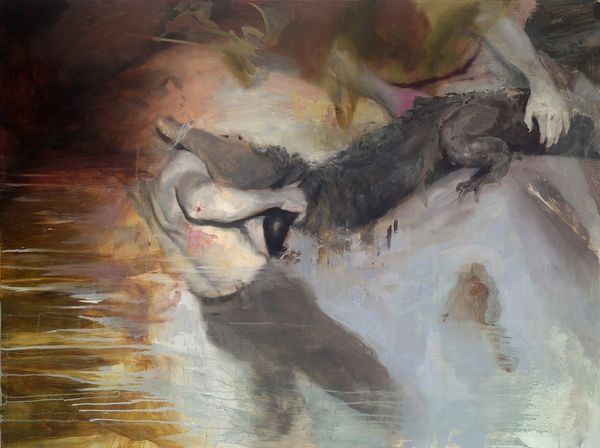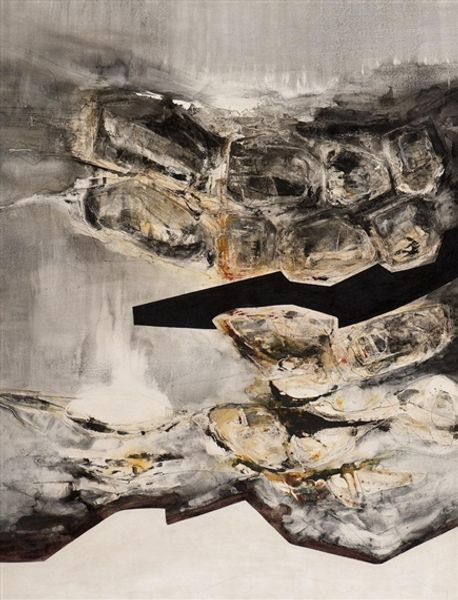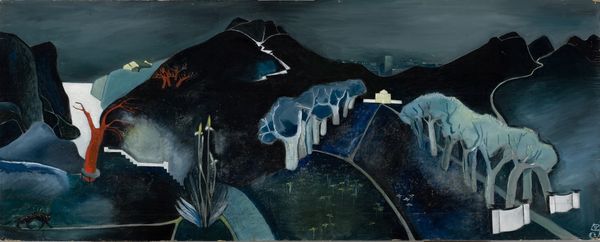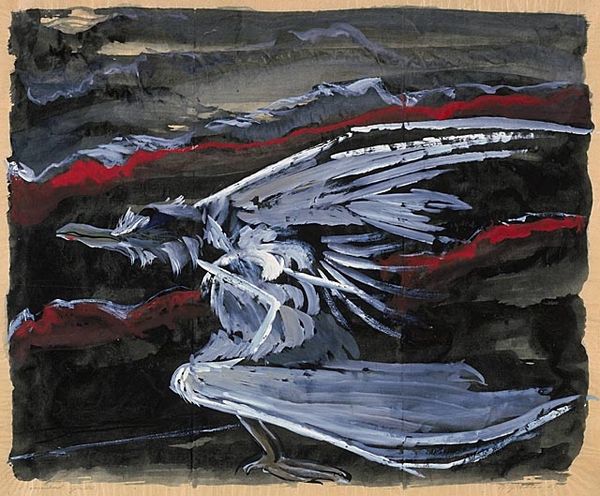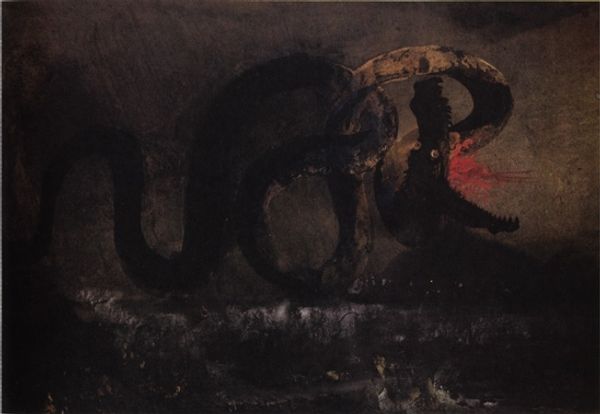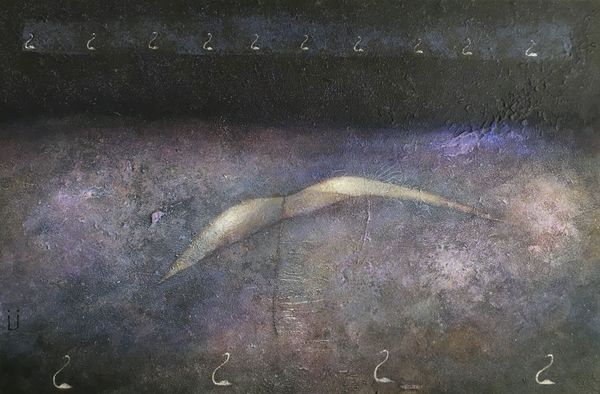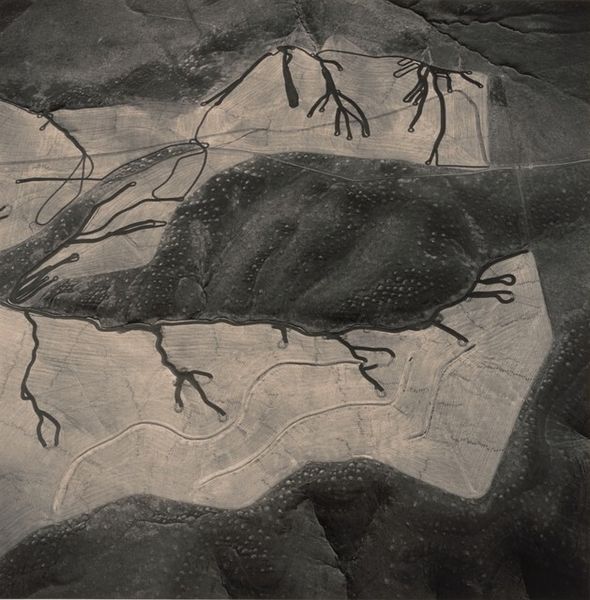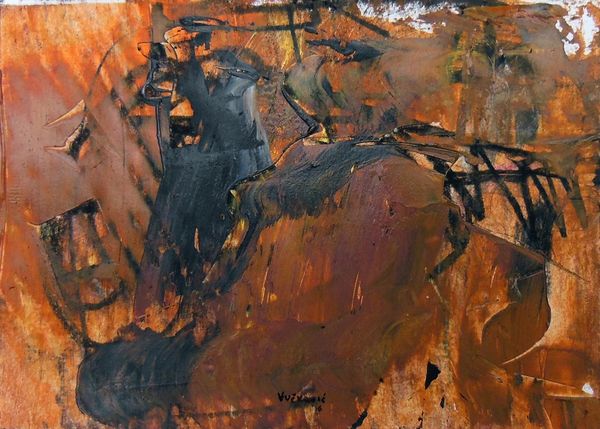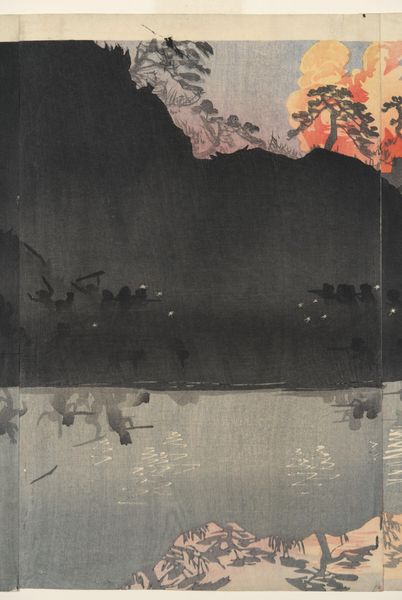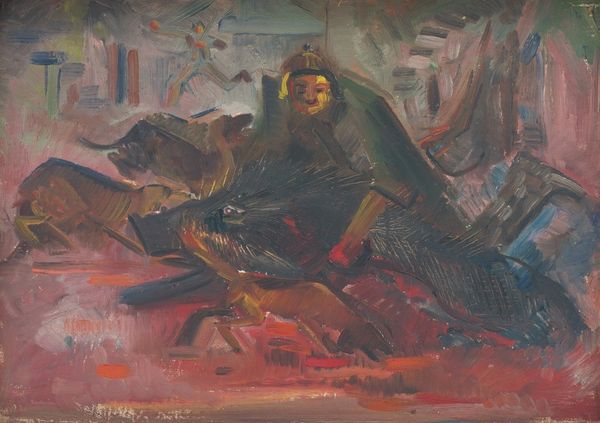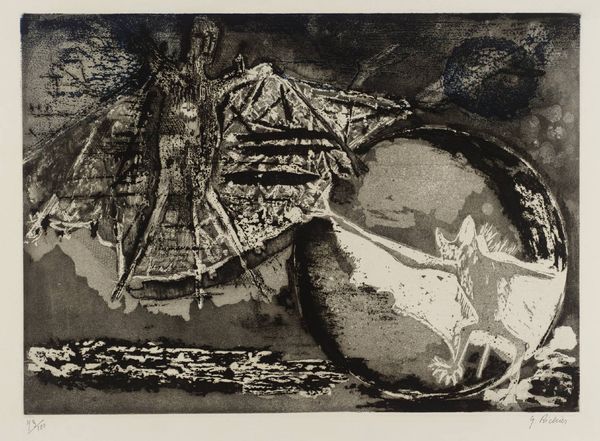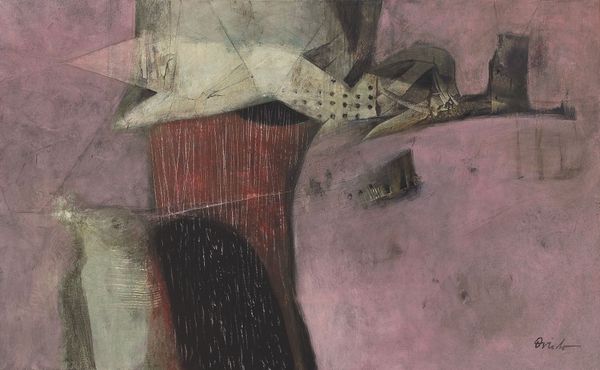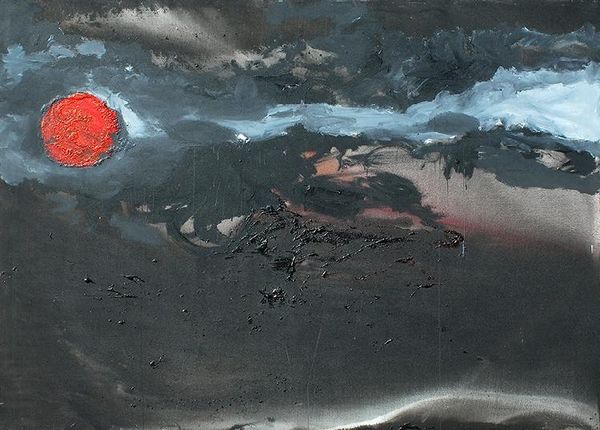
Dimensions: support: 810 x 1321 mm frame: 1006 x 1506 x 76 mm
Copyright: © The estate of Graham Sutherland | CC-BY-NC-ND 4.0 DEED, Photo: Tate
Editor: Here we have Graham Sutherland's 'Black Landscape,' part of the Tate Collection. It's... well, it's definitely black! There's a brooding quality, like a storm gathering. What do you make of it? Curator: It whispers to me of a secret place, almost prehistoric, wouldn't you say? Sutherland was deeply influenced by the Welsh landscape, and this feels like one of his internalized terrains. Editor: Internalized? Curator: Yes, like a landscape of the mind rather than a literal depiction. The dark hues and fragmented forms evoke a sense of mystery and perhaps even a touch of unease. What feelings does it stir in you? Editor: I get that sense of unease, definitely. It's like a beautiful nightmare. Thanks, I see it differently now. Curator: Art is like that, isn't it? A mirror reflecting our own hidden landscapes.
Comments
tate 8 months ago
⋮
http://www.tate.org.uk/art/artworks/sutherland-black-landscape-t03085
Join the conversation
Join millions of artists and users on Artera today and experience the ultimate creative platform.
tate 8 months ago
⋮
This Welsh scene reflects the artist's anxiety at the threat of war; it was painted during the ‘phoney war’ between 1939 and 1940. Both the title and the ominous twilight effect suggest imminent violence. Later the artist would transform objects found in nature, such as tree roots and branches, into human-like presences. Here it is the stark rocky landscape that rises up as a dark, threatening presence. Sutherland was influenced by the pastoral vision of William Blake and Samuel Palmer (shown in room 8). This painting echoes the breadth of vision Blake showed in times of war, transcending narrowly nationalistic concerns. Gallery label, September 2004
